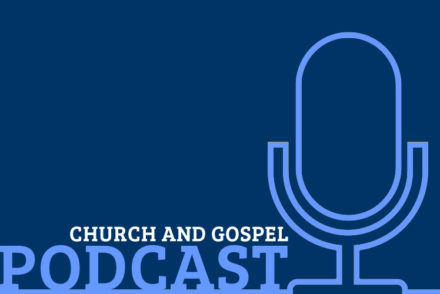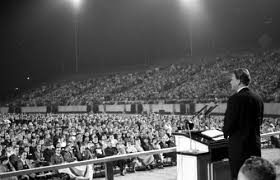Note: This blog is the last in a series of posts on teaching the Gospel of Matthew. You can find the first blog on teaching Matthew HERE.
The final section in Matthew tells the story of Jesus’ passion (from the Latin word for “suffering,” referring to Jesus’ torture and death) and resurrection. The book of Matthew ends with a “mini-discourse,” as befits Matthew’s style, we now call the “Great Commission.” The outline for the section looks like this.
VII. Section 7 – The Passion and the Resurrection (26:1-28:20)
A. Passion Narratives (26:1-27:66)
B. The Resurrection and the Great Commission (28:1-20)
The passion narratives detail Jesus’ arrest, his “trials,” his torture, and his death. Matthew follows with reports of two of the resurrection appearances of Jesus to his followers: the women at the tomb and then to all of his disciples. The Great Commission ends the Gospel, demonstrating one final time Matthew’s core theme—Jesus is the Old Testament Messiah, but he came to be the savior of the whole world. My notes and handout for my church are below. Note: some of the language below is adapted from the study notes on Matthew that I wrote for the Worldview Study Bible (Holman Bible Publishers, 2018).
Jesus’ Final Hours and His Arrest (26:1-56):
The centerpiece of Jesus’ final hours before his arrest is the Passover meal he eats with his disciples. It follows a brief description of the plot to betray him and his anointing at Bethany. And, though it is relatively short in relation to the larger section, it packs an outsized theological punch.
Passover was the feast of Israel in which they commemorated God’s rescue of his people from the judgment of the Death Angel (Ex 12:1-28) and the slavery of Egypt (Ex 12:29-42). The Passover lamb was killed on the fourteenth day of Nisan. After sunset, which marked the beginning of the next day in Jewish timekeeping, the Passover meal was eaten. Jesus probably celebrated the Passover on Thursday, shortly before his arrest.
Within the Passover ritual Jesus interprets the elements common to all Passover celebrations, explicitly putting himself into the Passover story. The bread and wine symbolize his body and blood, the sacrificial death of the Messiah for the forgiveness of sins. Just as God allowed a lamb to die in the place of the firstborn in every house in Egypt (Ex 12:1-28), so God allows the Messiah to die in the place of everyone, so they might be rescued from sin and death.
Following the Passover, the narrative turns dark. Peter’s betrayal is announced in the Gospel. The disciples fail Jesus in the Garden of Gethsemane. Jesus is arrested, and the disciples, especially Peter, abandon and then deny Jesus.
1. How is the Jesus story like the Passover story? What are the other “Passover-like” stories in the Bible?
2. Why do you think Matthew makes a big deal of the failure of the disciples? What can we learn from this about ourselves? What can we learn about Jesus?
Jesus’ Trial and Torture (26:57-27:31):
Throughout his trials, Jesus is selective in who he answers and in what charges he answers. He affirms to the Sanhedrin that he is Messiah, the Son of God (Mt 26:63-64), and he affirms to Pilot that he is the king of the Jews. Jesus, however, never answers any of the false accusations made against him; He instead remains silent. Jesus knows that his mission is to die for the sins of the world. He is not seeking to exonerate himself or escape his fate. He behaves like a guilty man though he is innocent, so he can die on the cross for a guilty world.
Pilot is a political opportunist. He has no desire to get embroiled in a Jewish religious dispute, especially not after the demonstration of Jesus’ popularity on Palm Sunday. He also has no desire to execute a prisoner because his arm is being twisted by the Jewish religious establishment. The religious leaders, however, see through Pilot’s attempts and hold their ground. When it comes to it, Pilot has no problem executing someone, guilty or not, if it is politically expedient.
1. What sorts of questions do Jesus’ accusers (Jewish and Roman) ask Jesus? What are their intentions? Jesus’ answers continue to confound them. Why? What does that tell us?
2. How is the Jesus and Barabbas story the same as your story? What does Barabbas’ name mean? Do you think that was intentional on God’s part?
Jesus’ Crucifixion and Resurrection and the Great Commission (27:32-28:15):
Matthew ends his Gospel of Jesus with a description of Jesus’ crucifixion and what is traditionally called “The Great Commission.” Matthew has already highlighted stories about pagan gentiles to whom God has revealed the good news of the Messiah (e.g. Matthew 2:1-12; 8:5-13; 15:21-28), and now Jesus instructs his followers to continue that work. Jesus commands them to take the good news about the Messiah to the ends of the earth.
1. What are we supposed to make of the tearing of the temple curtain and the dead walking around Jerusalem at the moment of Jesus’ death? Matthew doesn’t appear to tell us these events because of their startling nature (he barely mentions either). Matthew is telling these to us to teach us something. What?
2. How is the Great Commission the only fitting end to the Gospel of Matthew? How does it summarize the entire Gospel?





